One of the first things you may have learned as a child is just how birds build nests.
It is a staple in just about every children’s book as they learn how to read – a pair of birds, laying eggs and raising chicks in a nest nestled safely within the branches of a tree.
As we grow older, we come to realize that nests can come in all sorts of shapes and sizes.
And, as it turns out, there are now nests out there that can hold up to over a few hundred birds!
The Kalahari Desert, located in South Africa, is home to dozens of weaver bird species.
The males of these species are known to build some of the most elaborate and safest nests in the world.
These nests are often insulated and waterproof, and are often so well-built they resemble thatched roofs.
These nests are meant to attract the female in hopes she will decide that the nest is suitable for her eggs.
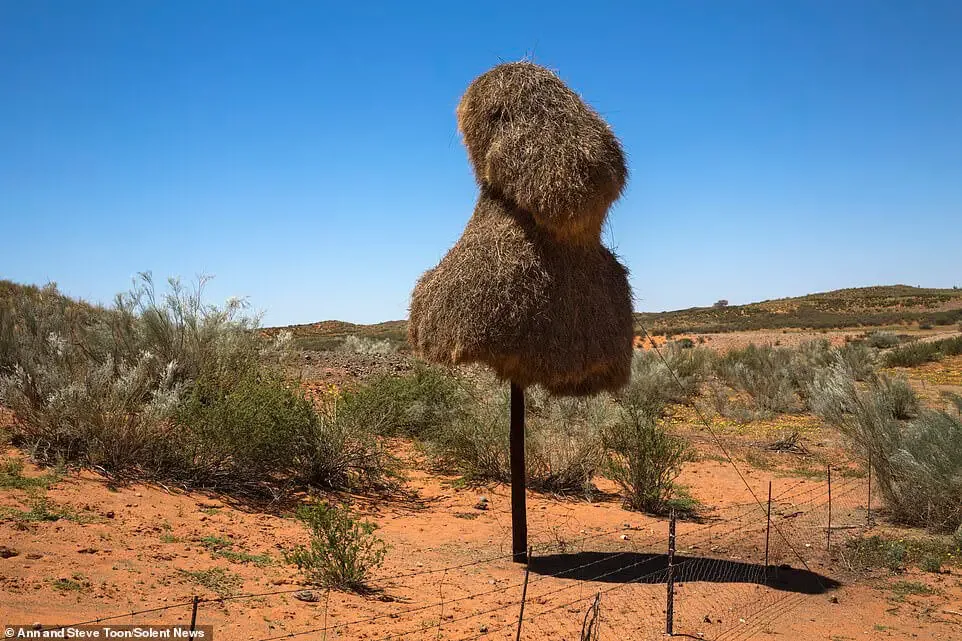
Some of these birds, like the Cape Weaver Bird, happen to be polygynous, which often means that not only are the nests bigger than you would normally expect them to be, you may find each nest containing up to seven females at the same time.
But what about birds that decide they want to open up their home to others?
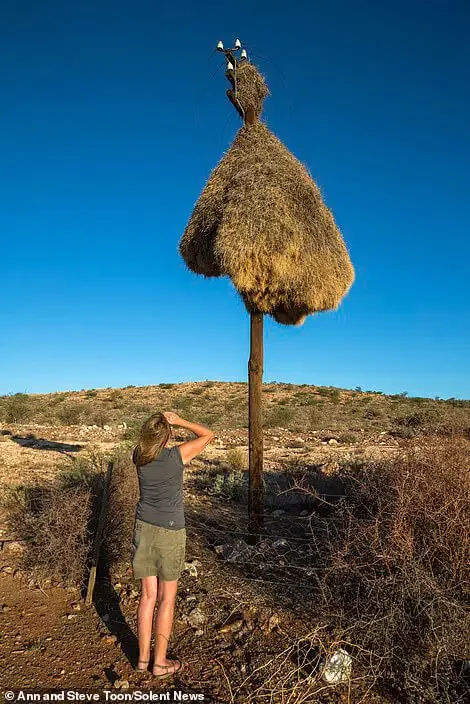
The Sociable Weaver Bird is a bird that lives in organized colonies.
You would immediately assume that is where they got their name from, but that isn’t the whole picture.
Instead, these birds are known to be “social” because they build nests so massive, they end up being home to several other bird species at the same time!
In fact, birds like the South African pygmy falcon will only home in nests built by the social weaver and no other.
This means that you can have up to 500 different birds from all kinds of species living in the same nest.
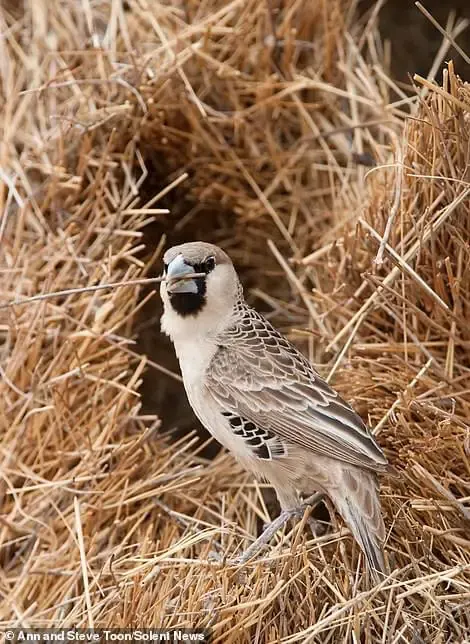
With just how rare trees are in a desert, however, the social weaver has to adapt.
Ann and Steve Toon, a couple aged 60-years-old and 56-years-old respectively, were met with a pleasant surprise when they recently visited Northern Cape’s Kgalagadi Transfrontier Park in South Africa.
There, the social weaver birds have not only successfully adapted to human presence, but are even taking advantage of the infrastructure humans have installed!
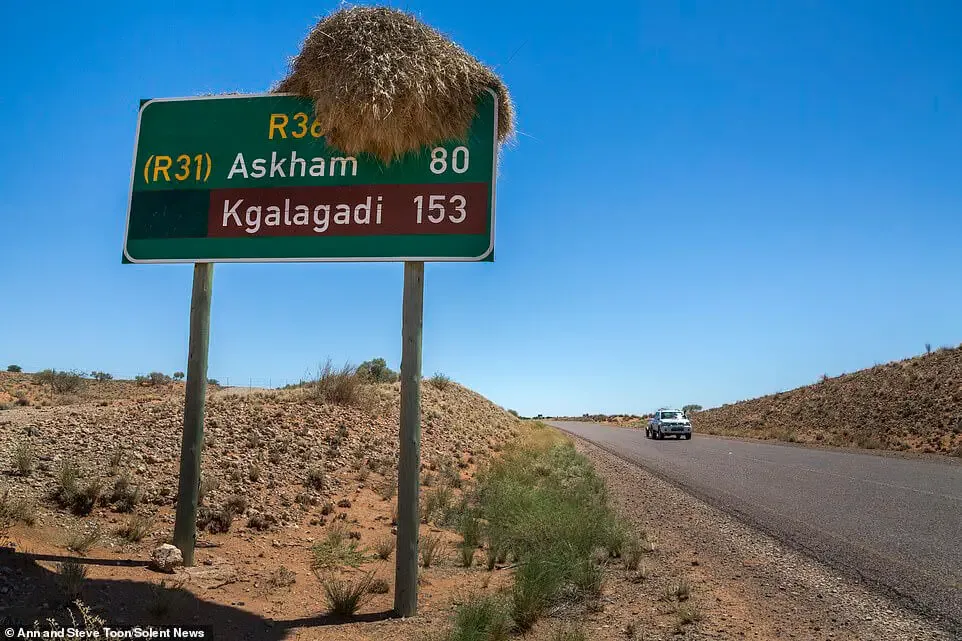
In pictures that the couple later posted to the internet, these ingenious little birds managed to build their massive, several-ton nests on telephone poles and road signs found all over the park.
They make for an incredible sight, and can easily grow to heights of 13 feet as the birds continue expanding the nest and adding more chambers for its friends.
Not bad for a bird that averages out at a length of five and a half inches!
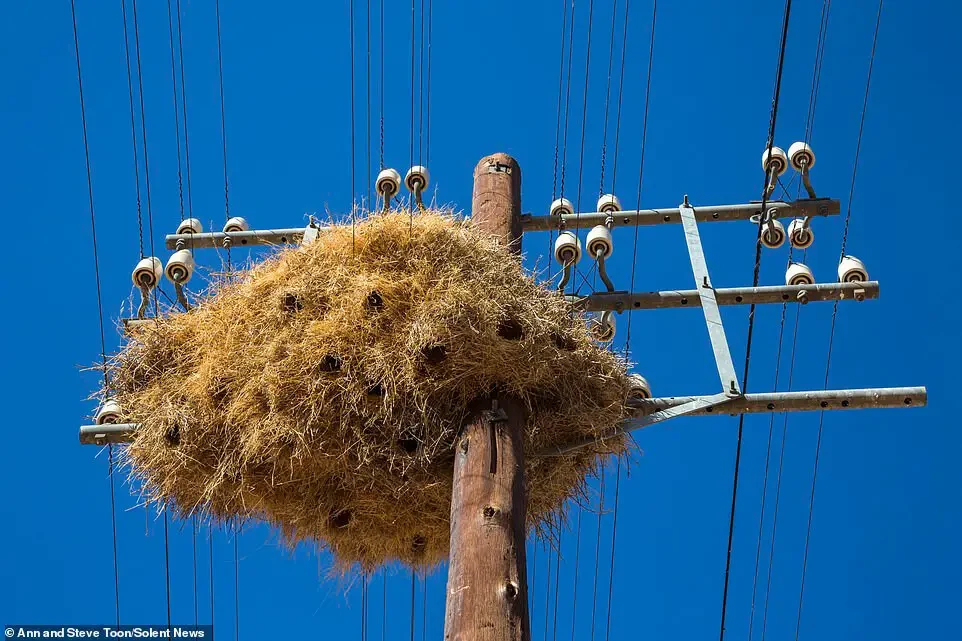
Just about everyone who has seen these nests, either in person or via pictures circulating the internet, have been in awe of just how huge these nests are.
They do make for quite a fascinating sight!
